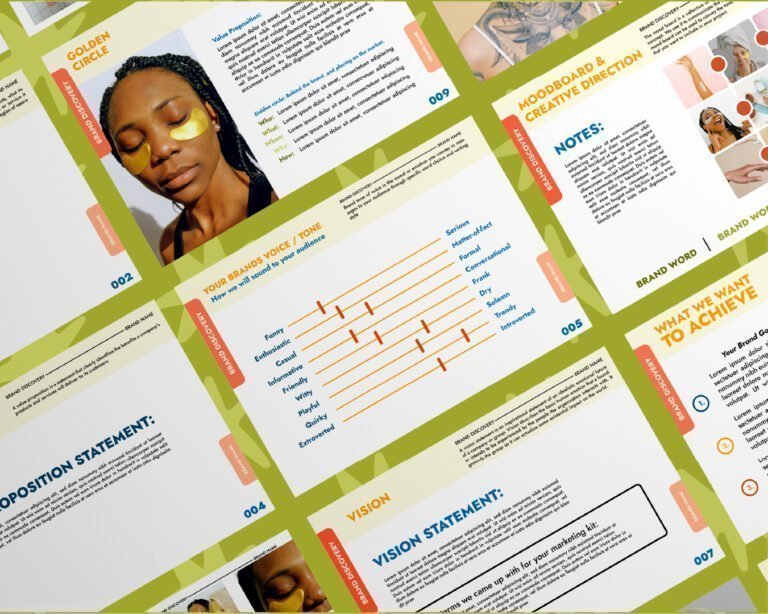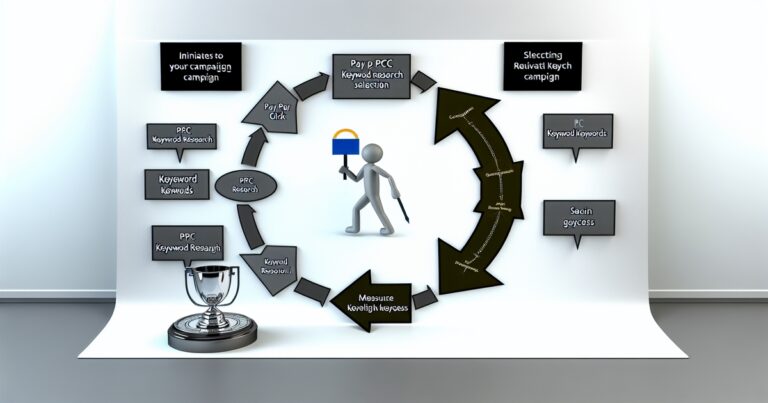In today’s world, where digital technology has transformed the way businesses reach out to their target audience, content marketing has become an essential tool for marketers. According to the Content Marketing Institute, content marketing is a strategic approach focused on creating and distributing valuable, relevant, and consistent content to attract and retain a clearly defined audience — and ultimately drive profitable customer action. Unlike traditional advertising, content marketing aims to provide value to the consumer by offering helpful information through various channels such as blog posts, social media updates, videos, podcasts etc. The goal is not only to attract customers but also build brand loyalty through engagement.
Definition of Content Marketing
Content marketing is all about creating quality content that attracts and retains a clearly defined audience with the ultimate goal of driving profitable customer action. It’s a strategic approach that involves understanding your target audience and developing content that meets their needs or solves their problems.
The types of content used in content marketing can vary widely depending on the marketer’s goals. Some examples include blog articles, social media posts, infographics, case studies, podcasts and videos.
Importance of Content Marketing in Today’s Digital Age
With more businesses moving online every day it has become increasingly difficult for companies to stand out from the crowd. Consumers are bombarded with advertisements everywhere they look which makes it hard for them to distinguish between relevant information that can help them solve problems versus irrelevant ads trying to sell something. This is where content marketing comes into play; it allows businesses to differentiate themselves by offering valuable information that is personalized for their target audience.
By creating engaging content that solves problems or answers questions for potential customers companies can gain trust while simultaneously building brand awareness. In today’s digital age consumers are savvy enough not be fooled by gimmicky old-school advertising methods so smart companies will invest in high quality well-crafted informative content to attract customers.
Understanding Your Audience
One of the most critical aspects of content marketing is understanding your audience. When creating content, it’s important to keep your target audience in mind and tailor your messaging to their needs and interests. This involves identifying who your ideal customer is and what motivates them to engage with your brand.
Identifying Your Target Audience
The first step in creating a successful content marketing strategy is identifying your target audience. This involves determining who you want to reach with your messaging and what their demographic characteristics are, including age, gender, education level, income range, location, job title or industry. By identifying these key characteristics, you can create more targeted messaging that resonates with your core audience.
You can identify your target audience by analyzing data on existing customers or conducting market research to gather insights into consumer behavior. This may involve surveying customers or using analytics tools to track web traffic and user engagement metrics.
Creating Buyer Personas
Once you have identified your target audience, the next step is creating buyer personas. Buyer personas are fictional representations of ideal customers that capture their goals, challenges and pain points related to the products or services you offer. By developing these personas, you can gain a deeper understanding of what motivates potential customers to engage with your brand and create content that speaks directly to them.
To create effective buyer personas, you should conduct interviews with real customers or use data from surveys or focus groups to develop more accurate depictions of customer behavior patterns. You should also consider the different stages in the buyer’s journey (awareness, consideration and decision) when creating personas as each stage requires unique messaging strategies.
Conducting Market Research
In addition to creating buyer personas based on existing customer data or surveys/focus groups, conducting market research can provide valuable insights into the behavior of potential customers. This may involve analyzing industry trends, competitor strategies or conducting a content audit to understand what types of content are resonating with target audiences.
Market research can also involve analyzing user engagement metrics on social media or web analytics tools to understand how users are interacting with your website, social media channels or other digital marketing efforts. By understanding how your target audience is engaging with your messaging and what types of content are most effective at driving engagement, you can refine your strategy and create more effective content that resonates with your core audience.
Creating Compelling Headlines and TitlesThe Importance of Headlines and Titles in Grabbing Attention
Your headline is the first impression you make on potential readers. It’s the deciding factor in whether or not someone clicks through to read your content. With so many other distractions vying for our attention, it’s more important than ever to craft a compelling headline that grabs readers’ attention and makes them want to learn more.
In fact, research has shown that 80% of people will read a headline, but only 20% will actually click through to read the full article. That means you need to make sure your headlines are top-notch if you want to maximize the impact of your content. Tips for Writing Effective Headlines and Titles
So what makes a great headline? There are a few key elements that can help make your headlines more effective:
1. Use numbers: Whether it’s “10 Tips for Better Content Marketing” or “5 Secrets to Boost Your Social Media Engagement,” headlines with numbers tend to perform better than those without. 2. Ask questions: Questions pique readers’ curiosity and encourage them to keep reading.
Try starting your headlines with “How,” “Why,” or “What” questions. 3. Use power words: Certain words have been shown to grab readers’ attention more effectively than others.
Some examples include “proven,” “ultimate,” “secret,” and “free.” 4. Keep it short: In general, shorter headlines tend to perform better than longer ones.
Aim for no more than 8-12 words if possible. 5. Stay true to your content: Make sure your headline accurately reflects the content of your article or blog post.
Misleading headlines may bring in clicks initially, but they’ll likely result in lower engagement rates over time as readers lose trust in your brand. By incorporating these tips into your headline writing process, you can increase the likelihood that your content will be read and shared by a wider audience.
Overall, crafting compelling headlines and titles is a critical part of any successful content marketing strategy. By following these tips and putting in the effort to create attention-grabbing headlines, you can set your content apart from the competition and drive more traffic to your website or blog.
Crafting Engaging Content In today’s digital age, content is king.
Consumers are bombarded with information from a variety of sources, making it important to create engaging content that captures their attention and keeps them interested. Writing for the web differs greatly from traditional print media.
The following tips will help you create compelling content that resonates with your audience. Writing for the Web vs Traditional Print Media
Writing for the web requires a different approach than writing for traditional print media. Online readers have a shorter attention span, so it’s important to get to the point quickly and keep their interest throughout the article.
Online readers also tend to scan articles rather than reading every word, so breaking up text with subheadings can be an effective way to make your content more readable. In contrast to print media where design elements are added by a designer in collaboration with the writer or editor; writers on the web must consider elements like images, colors and fonts–which greatly impact user experience–when crafting their pieces.
In addition, online readers prefer shorter paragraphs as they offer greater readability on digital platforms such as mobile devices. Tips for Creating Engaging Content
Creating engaging content isn’t just about having great writing skills – it’s also about understanding what your audience wants and needs. To make sure your content is hitting the mark, consider creating buyer personas or conducting market research.
Once you have a good understanding of your audience, you can start creating content that will resonate with them. One effective way to create engaging content is by using storytelling techniques.
Stories capture people’s attention and help them connect emotionally with what they’re reading. Another tip is to add visuals such as images or videos that complement your text and break up blocks of text to make it easier on viewers’ eyes.
Break up Text With Subheadings As mentioned earlier, online readers tend to scan articles rather than reading every word.
Breaking up text into sections using subheadings can help make your content more readable and easier to navigate. Subheadings also help to break up the monotony of long blocks of text, which can be intimidating for readers.
In addition, search engines often use subheadings to determine the structure of an article and how relevant it is to the topic being searched. Using subheadings that contain your target keywords can improve your search engine optimization (SEO) efforts and increase your visibility online.
Writing engaging content requires a deep understanding of what resonates with your audience and how to craft a piece that is both readable and visually appealing. By using storytelling techniques, adding visuals, and breaking up text with subheadings, you can create content that captures people’s attention and keeps them engaged with your brand or message.
Optimizing Your Content for SEO
Creating high-quality content is only half the battle when it comes to content marketing. Even the best-written content can go unnoticed if it doesn’t appear prominently in search engine results pages (SERPs). This is where search engine optimization (SEO) comes into play.
Simply put, SEO is the process of making your website and its content more visible and attractive to search engines like Google. Here are some tips on how you can optimize your content for SEO.
Understanding Keywords and How to Use Them Effectively
Keywords are the fundamental building blocks of any successful SEO strategy. They are the words and phrases that people type into search engines when they’re looking for information online. Identifying relevant keywords for your business or industry is crucial because it helps ensure that your content appears in relevant searches.
To find keywords, you can use tools like Google AdWords Keyword Planner, SEMrush, or Ahrefs. Once you’ve identified relevant keywords, it’s important to use them effectively within your content.
Avoid keyword stuffing – using a large number of keywords in an unnatural way – which can harm your site’s visibility in SERPs. Instead, focus on using your target keywords naturally in key areas of your content such as the title tag, meta description, headers (H1-H6), body copy, image alt text, and URL.
Tips for Optimizing Your Content for Search Engines
Apart from using keywords effectively within your content, here are some other tips to optimize it for search engines: Write high-quality meta descriptions: A well-crafted meta description that includes relevant keywords can increase click-through rates from SERPs.
Use descriptive URLs: Make sure URLs accurately describe what the page is about. Create internal links: Linking internally to other pages on your site can help search engines understand the context of your content.
Optimize images: Use descriptive filenames and alt text to help search engines understand what your images are about. Make sure your site is mobile-friendly: With more than 50% of online searches now conducted on mobile devices, having a mobile-friendly site is crucial for SEO.
By following these tips, you can enhance the visibility of your content in SERPs and attract more relevant traffic to your website. However, keep in mind that SEO is an ongoing process that requires constant monitoring and tweaking to achieve optimal results.
Promoting Your Content Promoting your content is just as important as creating it.
After all, no matter how amazing your content is, it won’t make an impact unless people know about it. Promoting your content is the key to reaching a wider audience and driving traffic back to your website.
In this section, we’ll cover the importance of promoting your content and some strategies for promoting it on social media platforms. Importance of Promoting Your Content
Promoting your content is essential for increasing its reach and visibility. When you promote your content, you can attract more visitors to your website, generate more leads, and ultimately increase revenue.
Without promotion, however great your content may be, it will simply go unnoticed. Moreover, promoting your content helps in establishing brand awareness and credibility in the market.
If no one knows about you or hears from you regularly then how can they trust you? By constantly sharing quality content that adds value to their lives through various channels including social media platforms helps in building trust with potential customers.
Strategies for Promoting Your Content on Social Media Platforms Social media platforms are ideal for promoting your content because they offer a way to interact with followers directly while also reaching out to new audiences through hashtags and trending topics.
Here are some strategies that can help in promoting the content on social media. One strategy is to create shareable images or infographics that include links back to your website.
These graphics should be eye-catching and informative so that users are inclined to share them with their followers. Another strategy is using paid promotions such as Facebook Ads or LinkedIn Sponsored Posts which helps in marketing the post specifically towards target audience groups who might show an interest in the promoted topic based on their profile information.
running a social media contest where users need to share or engage with a piece of specific content could not only increase engagement rate but also drive traffic back towards your website where users might potentially convert after seeing your product or service. Promoting your content is essential for achieving success in content marketing.
You can promote your content on social media platforms using various strategies that include creating shareable images, paid promotions and running contests. By following these strategies, you can attract more visitors to your website and increase revenue.
Measuring Your Success
One of the most crucial aspects of content marketing is measuring your success. Without measuring key metrics, it’s impossible to assess the effectiveness of your content marketing strategy and make data-driven decisions to improve and optimize your efforts. In this section, we will discuss the key metrics you need to measure to evaluate the success of your content marketing.
Understanding Key Metrics
When it comes to measuring the success of your content marketing efforts, there are several key metrics you should track. These include traffic, engagement rates, conversion rates, and more.
Traffic refers to how many people are visiting your website or engaging with your content. This metric helps you understand how effective your marketing strategy is at driving traffic to your site.
Engagement rates refer to how much time users spend on a page or post on average. This metric can be tracked through bounce rates and session duration.
High engagement rates indicate that users find value in the content you’re producing and are more likely to share it with others. Conversion rates refer to how many people take action after engaging with your content.
This could be anything from filling out a contact form or making a purchase through an e-commerce store. Tracking conversion rates is crucial because it helps you understand if your content is effectively driving conversions and generating revenue for your business.
Strategies for Measuring Success
To effectively measure the success of your content marketing strategy, start by setting clear goals that align with business objectives such as increasing website traffic or generating leads/sales from specific pieces of content. Once you have set goals, use tools such as Google Analytics or other data-tracking software solutions like SEMrush or Ahrefs that provide valuable insights into audience behavior on websites. These tools help marketers track visitors’ behavior patterns, including where they come from (geo-location) what device they use (desktop/mobile), which pages they visit, and how long they stay.
Moreover, A/B testing two versions of a page or post can help you determine which version performs better over time. For example, split-testing or multivariate testing can help you determine the optimal headline or image for a blog post that will lead to higher engagement and conversions.
Measuring your content marketing success is critical to ensuring that your strategy is effective and optimized for results-driven activities. By tracking key performance metrics such as traffic, engagement rates, and conversion rates, utilizing tools like Google Analytics or SEMrush/Ahrefs, and conducting A/B tests to see what works best for your audience over time will ensure that you’re on the right track to achieving your content marketing goals.
Conclusion
Content marketing is an essential part of any successful digital marketing strategy, and effective writing is a crucial component of creating engaging content. In this article, we have covered several key tips for writing compelling content that can help increase your website’s traffic, engagement rates, and conversion rates.
One of the most critical aspects of content marketing is understanding your audience. By identifying your target audience and creating buyer personas, you can tailor your writing to meet their specific needs and interests.
Additionally, conducting market research can provide valuable insights into what topics resonate with your audience and which types of content receive the most engagement. Another key takeaway from this article is the importance of crafting engaging headlines and titles.
Your headline is often the first thing that a potential reader sees, so it must be compelling enough to grab their attention and entice them to read on. Using numbers, power words, questions or other creative techniques can help make your headlines more eye-catching.
Promoting your content through social media channels is an essential component of any successful content marketing strategy. By sharing your articles across various platforms such as Facebook or Twitter you not only boost visibility but also encourage readers to engage with it by commenting or sharing themselves.
By incorporating these tips into your writing for content marketing purposes, you can create engaging material that resonates with readers while helping achieve business objectives such as increased traffic or conversions. Remember that there’s always room for improvement in crafting compelling stories through written words – so keep experimenting with different approaches until you find what works best for you!









